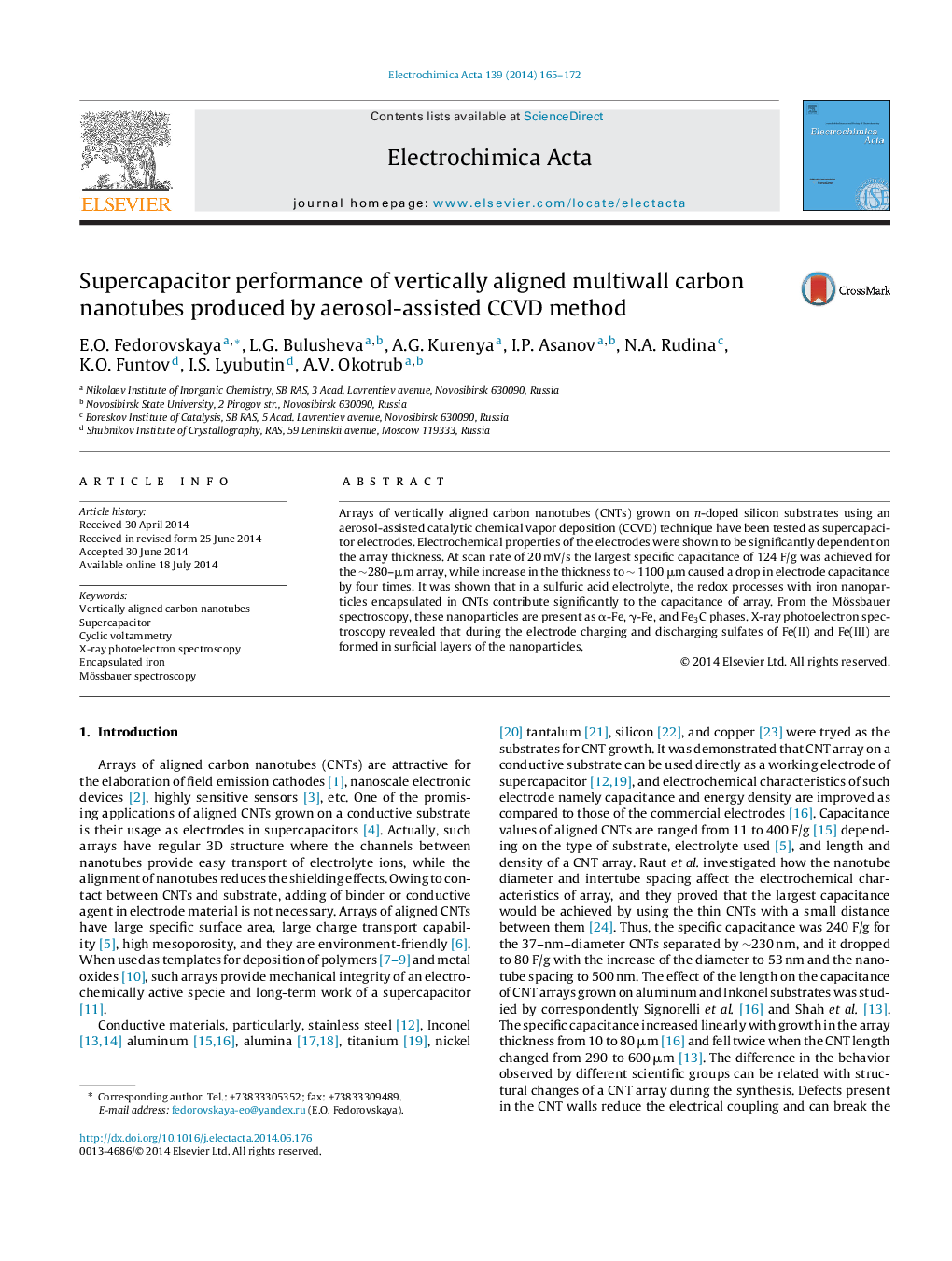| Article ID | Journal | Published Year | Pages | File Type |
|---|---|---|---|---|
| 185343 | Electrochimica Acta | 2014 | 8 Pages |
•We examine supercapacitor behavior of CNT arrays grown on n-doped silicon substrate as the result of thermal decomposition of ferrocene-toluene aerosol during a period from 30 min to 3 h.•We show that the aligned CNTs have the larger specific capacitance than the disordered nanotubes when the array thickness is between ∼200 and 800 μm.•We reveal a Fe3+/Fe2+ redox contribution into capacitance of the CNTs and study the chemical state of iron using X-ray photoelectron and Mössbauer spectroscopy.
Arrays of vertically aligned carbon nanotubes (CNTs) grown on n-doped silicon substrates using an aerosol-assisted catalytic chemical vapor deposition (CCVD) technique have been tested as supercapacitor electrodes. Electrochemical properties of the electrodes were shown to be significantly dependent on the array thickness. At scan rate of 20 mV/s the largest specific capacitance of 124 F/g was achieved for the ∼280–μm array, while increase in the thickness to ∼ 1100 μm caused a drop in electrode capacitance by four times. It was shown that in a sulfuric acid electrolyte, the redox processes with iron nanoparticles encapsulated in CNTs contribute significantly to the capacitance of array. From the Mössbauer spectroscopy, these nanoparticles are present as α-Fe, γ-Fe, and Fe3C phases. X-ray photoelectron spectroscopy revealed that during the electrode charging and discharging sulfates of Fe(II) and Fe(III) are formed in surficial layers of the nanoparticles.
Graphical abstractFigure optionsDownload full-size imageDownload as PowerPoint slide
